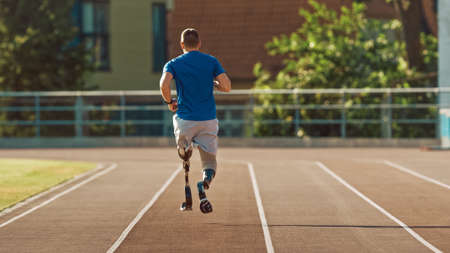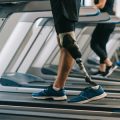Introduction to Cultural Diversity in the UK
Britain is renowned for its vibrant cultural mosaic, shaped by centuries of migration, integration, and evolving identities. From bustling urban centres like London and Manchester to the close-knit communities in Wales, Scotland, and Northern Ireland, the UK is home to a remarkable range of ethnic backgrounds, languages, and traditions. This diversity is not merely demographic; it profoundly influences daily life, including approaches to health and exercise. Understanding the nuances of each community’s values, beliefs, and social norms is essential when designing effective exercise prescriptions. The interplay between culture and lifestyle choices—such as dietary habits, attitudes towards physical activity, family structure, and religious practices—means that a one-size-fits-all approach often falls short. Instead, appreciating Britain’s rich cultural landscape offers an invaluable foundation for more personalised, respectful, and impactful health interventions across its diverse populations.
2. Understanding Community-Specific Health Beliefs and Barriers
When designing exercise prescriptions for diverse British communities, it’s essential to appreciate how different groups perceive health, fitness, and physical activity. The UK is home to a rich tapestry of cultures—South Asian, Black African and Caribbean, Eastern European, and many others—each with its own beliefs, traditions, and attitudes toward exercise. For example, some South Asian families may prioritise academic achievement over physical pursuits, while certain older Eastern European migrants might value outdoor walking or gardening more than gym-based activities. Recognising these nuances enables practitioners to tailor their approach for better engagement and outcomes.
Perceptions of Health and Fitness
Health is not a one-size-fits-all concept. Some communities view exercise mainly as a means to prevent illness rather than as a lifestyle choice. In contrast, younger generations across the UK might see fitness as integral to social life or self-image. Faith can also play a significant role; for example, within Muslim communities, modesty requirements may influence preferences for women-only sessions or certain types of attire during exercise.
Common Cultural Barriers to Exercise Participation
| Community Group | Typical Health Beliefs | Common Exercise Barriers |
|---|---|---|
| South Asian (e.g., Indian, Pakistani, Bangladeshi) | Prevention of disease through diet; family obligations prioritised over personal fitness | Lack of culturally appropriate facilities; language barriers; gender-specific concerns |
| Black African/Caribbean | Value community-based activity; belief in physical resilience | Limited access to suitable spaces; underrepresentation in mainstream programmes |
| Eastern European | Emphasis on natural movement (walking, manual labour); less focus on structured exercise | Economic pressures; lack of familiarity with local leisure centres |
| Older White British | Traditional view on ageing and activity; strong ties to sports clubs or walking groups | Anxiety about injury; limited transport options in rural areas |
Tuning into Local Realities
The real power lies in listening directly to individuals within each community. Engage with local leaders, attend faith gatherings or cultural festivals, and be present where people are comfortable sharing their views. This grassroots insight helps uncover subtle but critical factors—such as stigma around women exercising publicly or the impact of shift work patterns among migrant workers—that official statistics might miss. Ultimately, understanding these community-specific health beliefs and barriers is the foundation for crafting truly effective and respectful exercise interventions across Britain’s diverse landscape.
![]()
3. Culturally Responsive Exercise Prescription
When working within Britain’s vibrant tapestry of communities, it is essential that exercise professionals move beyond a “one-size-fits-all” approach. Recognising and respecting the cultural, religious, and traditional practices of British residents—whether from South Asian, Afro-Caribbean, Middle Eastern, Eastern European backgrounds, or others—should sit at the heart of personalised exercise prescription.
Understanding Community Needs
Start by engaging with community members to understand their unique preferences and possible barriers to physical activity. For example, some Muslim women may prefer female-only sessions or modest dress codes due to religious beliefs. Similarly, certain South Asian communities may have dietary restrictions or fasting periods, such as Ramadan, which need consideration when scheduling sessions or recommending nutrition-related advice.
Adapting Programmes for Religious Observance
Scheduling flexibility is crucial. During major religious festivals like Eid, Diwali, or Passover, participation in regular exercise routines may decrease. Offering adaptable timetables or home-based alternatives can help individuals maintain consistency without feeling culturally alienated.
Incorporating Traditional Activities
Cultural values often influence preferred forms of movement. For instance, incorporating dance styles such as Bhangra or Zumba can make programmes more appealing to certain groups. Community walking clubs—common in many British towns—can foster social connection while supporting physical health.
Respectful Communication
Always use culturally sensitive language and avoid assumptions about capability or interest based on background alone. Invite open dialogue and feedback, creating a space where clients feel heard and respected.
Practical Tips for Practitioners
- Consult local faith leaders or community representatives when designing group activities.
- Ensure facilities provide privacy options (e.g., screens or female-only hours).
- Be mindful of traditional meal times and fasting periods when planning exercise intensity and timing.
Ultimately, a culturally responsive approach not only improves adherence but also demonstrates genuine respect for the rich diversity that defines British society today.
4. Communication Styles and Language Considerations
Effective communication lies at the heart of successful exercise prescription, especially within the rich tapestry of British communities. As a fitness professional or health practitioner, understanding and respecting the diverse communication styles, dialects, and linguistic needs of clients is paramount for building trust and ensuring that guidance resonates. This section explores best practices for using inclusive language, addressing dialect differences, and fostering clarity and comfort during exercise consultations.
Best Practices for Inclusive Language
Britain’s multicultural society means that clients may bring different languages, accents, and cultural references to each consultation. Using inclusive language helps create a welcoming environment and avoids alienating anyone. For example:
| Do | Don’t |
|---|---|
| Use “partner” or “spouse” instead of assuming marital status or gender | Assume family structures or relationships based on appearance |
| Avoid idioms that may not translate well (e.g., “hit the ground running”) | Use slang or colloquialisms without explanation |
| Check preferred pronouns and use them consistently | Make assumptions about identity or background |
Addressing Dialect Differences Across Britain
The UK is home to a variety of regional dialects—Scouse, Geordie, Cockney, Brummie, Glaswegian, among others—that can influence both comprehension and comfort in communication. Fitness professionals should:
- Listen actively for regional terms or phrases unfamiliar to them.
- Politely ask for clarification when needed, modelling openness to learning.
- Where possible, adapt vocabulary to reflect local expressions without forced mimicry.
- Avoid correcting clients’ speech; instead, focus on mutual understanding.
Common Regional Vocabulary Examples
| Region | Local Term | Standard Equivalent |
|---|---|---|
| Liverpool (Scouse) | Bifter (cigarette) | Cigarette |
| Newcastle (Geordie) | Canny (good/nice) | Good/Nice |
| Birmingham (Brummie) | Tara-a-bit (goodbye) | Goodbye/See you later |
| London (Cockney) | Knees up (party/dance) | Party/Dance session |
| Glasgow (Glaswegian) | Pure dead brilliant (very good) | Very good/Excellent |
Ensuring Clarity and Comfort in Consultations
An effective exercise consultation is not just about what is said but how it’s said. Here are key strategies to ensure clarity and comfort:
- Simplify instructions: Break down exercises into clear steps; avoid jargon unless you explain it first.
- Create space for questions: Invite clients to share if anything is unclear; normalise asking for repetition or explanation.
- Cultural humility: Show genuine curiosity about your client’s background, preferences, and any physical activity barriers shaped by culture or language.
- Follow-up in writing: Offer written summaries or exercise plans using plain English and visual aids where appropriate.
- Respect non-verbal cues: Be attentive to body language indicating confusion or discomfort and check in sensitively.
A Practical Reflection from Experience
I once worked with a group from Manchester who used local football analogies in every conversation. By embracing their references—asking what they meant by “having a mare” or joining in when they cheered “mint!” after a good set—I found rapport built much faster. It reminded me that meeting people where they are linguistically is as important as meeting them physically in their fitness journey.
5. Case Studies from British Communities
Real-world experience is often the best teacher, especially when it comes to tailoring exercise prescriptions across Britain’s diverse cultural landscape. Let’s look at a few case studies that highlight both the challenges and effective solutions practitioners have discovered while working in various UK communities.
Case Study 1: South Asian Women in Birmingham
In Birmingham, a physiotherapist noticed that South Asian women were underrepresented in her community exercise classes. Through open conversations, she learnt that social norms around modesty and gender roles made public mixed-gender sessions uncomfortable for many participants. The solution? She collaborated with local mosques to provide female-only classes led by women, scheduled after school drop-off times to fit family routines. Attendance soared as cultural barriers were acknowledged and addressed.
Case Study 2: Somali Elders in Cardiff
A health promotion project targeting Somali elders in Cardiff faced initial resistance because traditional gym environments felt alien and intimidating. Working with community leaders, organisers shifted their approach: they introduced gentle group walks in local parks followed by social tea sessions. This bridged the gap between physical activity and cultural preference for communal gatherings, leading to better engagement and improved health outcomes.
Case Study 3: Polish Construction Workers in London
Many Polish construction workers in East London struggled with musculoskeletal issues but rarely attended exercise-based rehab sessions due to long work hours and language barriers. An enterprising physiotherapist partnered with local employers to offer short, practical stretching workshops on-site during lunch breaks, and produced bilingual instructional leaflets. This pragmatic adaptation saw increased participation and reduced workplace injuries.
Key Takeaways
- Cultural sensitivity matters: Tailoring the environment—whether through single-gender classes or familiar settings—can make all the difference.
- Community collaboration: Engaging local leaders and understanding social structures builds trust and ensures relevance.
- Practical flexibility: Adjusting delivery methods, such as providing sessions at workplaces or using multiple languages, overcomes logistical and linguistic barriers.
Reflection from Practice
These examples show that truly effective exercise prescription doesn’t just consider physiology—it listens deeply to lived experience. By embracing cultural humility and working alongside communities, practitioners can create meaningful change that respects both health needs and cultural identities.
6. Practical Tips for Building Trust and Engagement
Creating effective exercise prescriptions within the UK’s diverse communities goes far beyond simply handing out workout plans. It requires a genuine commitment to building trust, fostering rapport, and demonstrating cultural sensitivity—skills that are just as vital as technical knowledge. Here are some actionable strategies to help practitioners engage with British communities in ways that improve adherence and outcomes.
Get to Know Your Community
Start by investing time in understanding the specific backgrounds, beliefs, and barriers of the people you serve. Attend local events, join community forums, or partner with cultural leaders. This not only builds your credibility but also shows respect for their traditions and everyday realities. For example, recognising the importance of Friday prayers for Muslim clients or major religious festivals across different groups can inform scheduling and communication.
Communicate with Cultural Sensitivity
Use plain English and avoid jargon, especially when working with people whose first language isn’t English. Be mindful of regional slang or idioms—what works in London may not land well in Manchester or Glasgow. Take cues from your clients’ preferences: some may prefer formal titles while others appreciate a friendly, relaxed approach. Always ask rather than assume, and be open to feedback about your language or mannerisms.
Personalise Your Approach
One-size-fits-all rarely works in practice. Tailor your recommendations based on what you’ve learned about each client’s culture and values. For example, suggest group walks for South Asian women who may prefer exercising together for modesty or safety reasons. Or offer home-based routines for those who face barriers attending mixed-gender gyms.
Foster Community Involvement
Collaboration is key—work with local faith organisations, schools, or cultural associations to co-create programmes. This not only makes your interventions more relevant but also leverages trusted community networks to encourage participation. Peer ambassadors from within these groups can be powerful motivators and role models.
Be Consistently Reliable and Respectful
Trust is built over time through small actions: always turn up when you say you will, listen without judgement, and keep information confidential. Be open about your own learning process—admitting when you don’t know something can actually strengthen relationships if you show willingness to learn.
Celebrate Small Wins Together
Acknowledge milestones—no matter how minor—with genuine enthusiasm. Celebrations could be as simple as a group photo after a community walk or highlighting an individual’s progress in a newsletter (with their permission). Recognition creates a positive feedback loop that reinforces engagement.
By approaching each interaction with empathy, flexibility, and respect for cultural nuances, practitioners can make lasting impacts—not just on physical health but on overall community wellbeing across Britain’s wonderfully diverse landscape.
7. Conclusion: Embracing Cultural Competence in Practice
Throughout this exploration of cultural considerations in exercise prescription across Britain’s diverse communities, one message rings clear: cultural competence is not just a desirable skill but a vital necessity for every fitness and health professional. Our journey has highlighted the richness of Britain’s multicultural landscape, from South Asian, Black British, and Chinese communities to Eastern European, Middle Eastern, and Caribbean groups—all bringing unique values, beliefs, and traditions that shape their relationship with physical activity.
The key insights point towards the importance of open-minded listening, building trust through genuine curiosity, and avoiding a ‘one-size-fits-all’ approach. Tailoring exercise recommendations requires understanding not only language preferences and religious practices but also social norms around gender roles, family involvement, modesty, and even perceptions of health and illness. These nuances can dramatically influence engagement and adherence.
Moreover, forging partnerships with community leaders, faith groups, and culturally-rooted organisations fosters inclusion and provides valuable local context. It’s equally crucial to challenge our own assumptions—what works in one postcode or borough may not work in another. By engaging in ongoing learning, seeking feedback from participants, and reflecting on outcomes, practitioners can keep evolving their approach for better results.
Cultural competence is an ongoing process rather than a destination. In practice, this means embracing flexibility: adapting communication styles, being sensitive to dietary requirements (such as during Ramadan or Lent), respecting traditional forms of movement (like bhangra or capoeira), and accommodating different attitudes towards mixed-gender classes or public exercise spaces.
Ultimately, the most effective exercise prescription is one rooted in empathy, respect, and the willingness to learn from those we aim to serve. By valuing diversity as a strength and remaining committed to self-improvement, professionals can help make physical activity accessible—and enjoyable—for all corners of British society.
Let’s continue to seek out new perspectives, share best practices with colleagues nationwide, and empower every individual to lead a healthier life—because culturally competent care is at the heart of inclusive health promotion in modern Britain.


